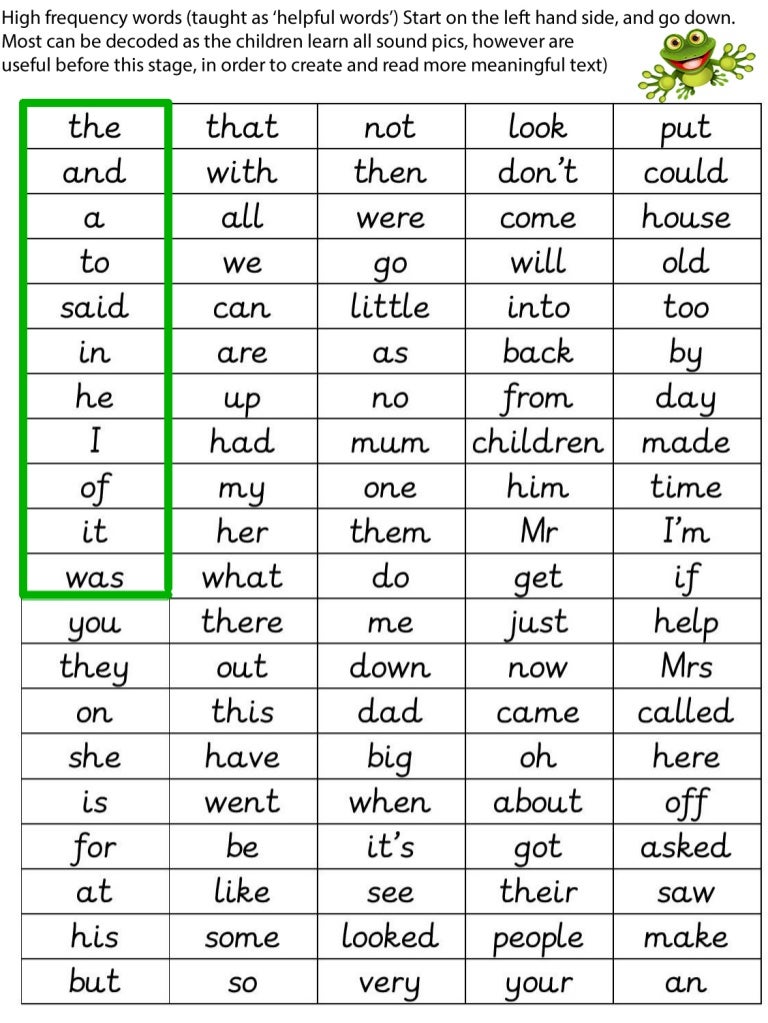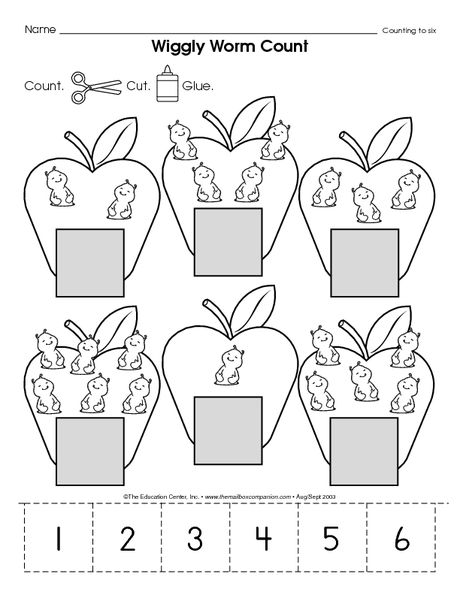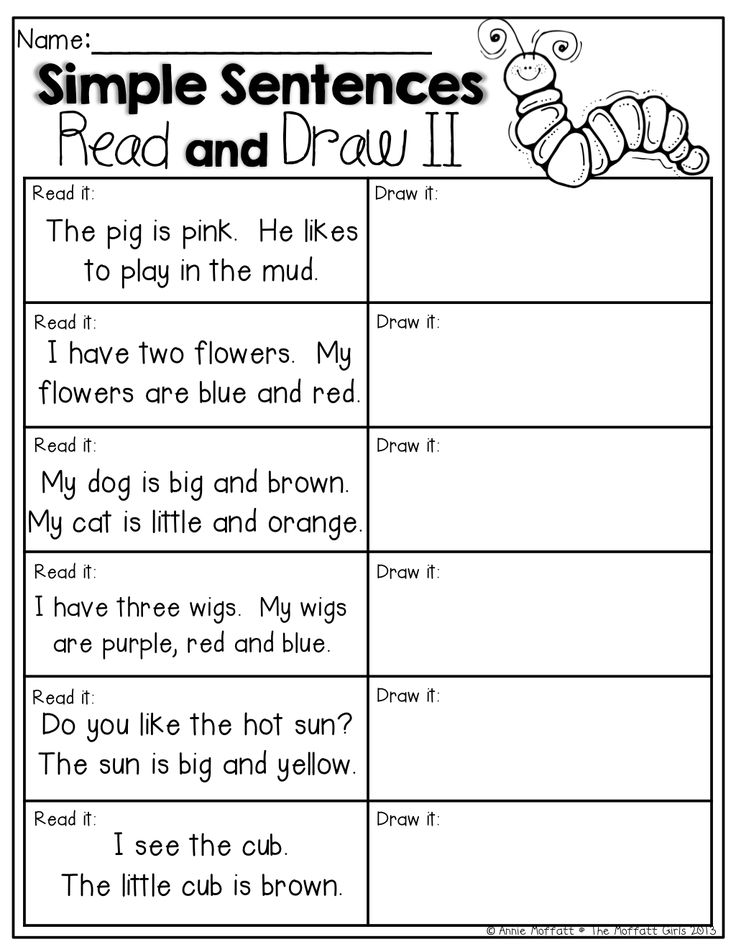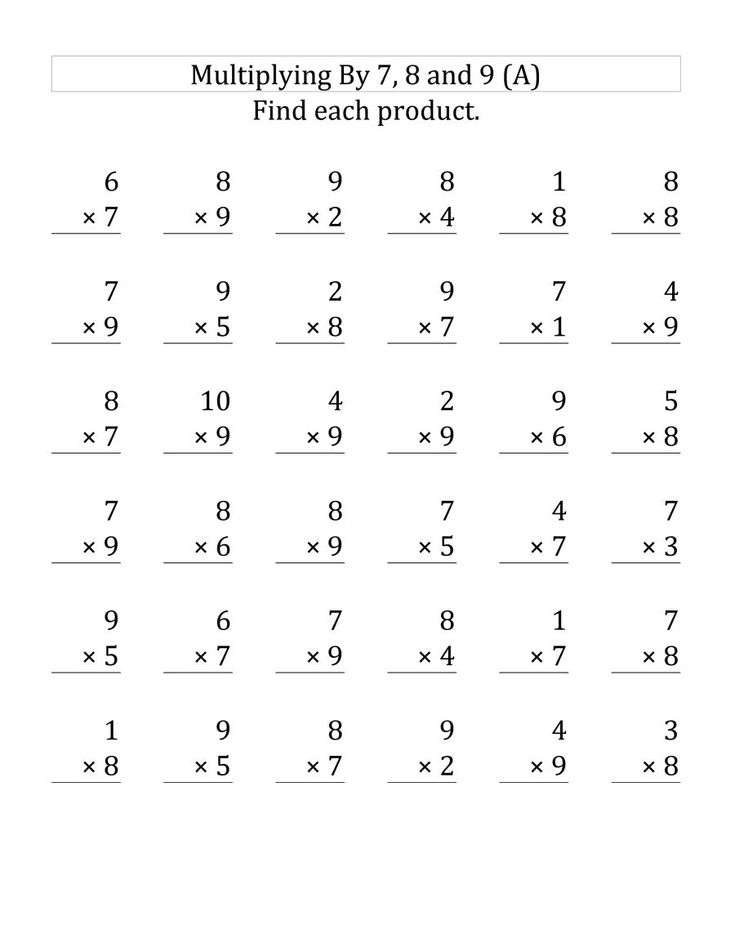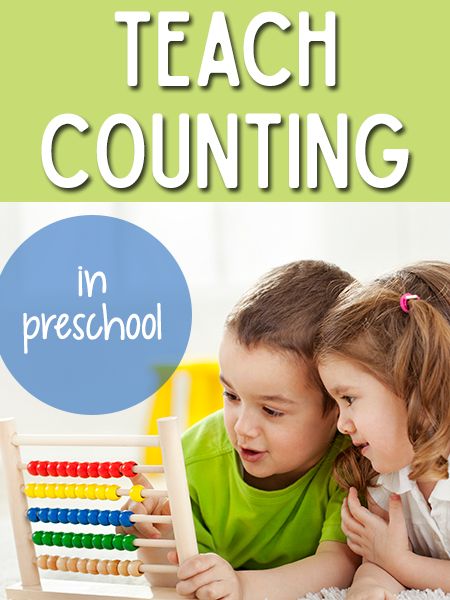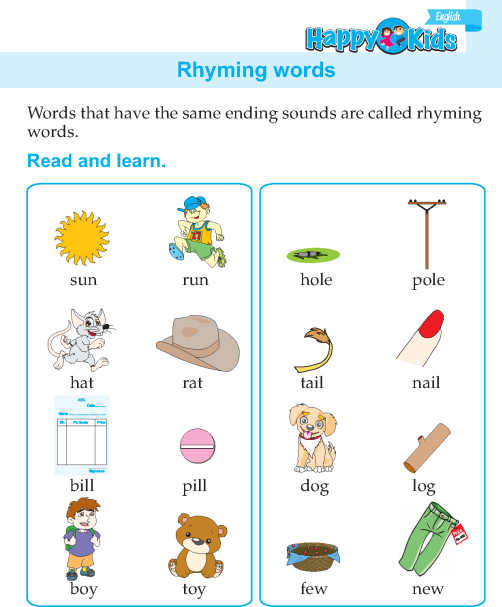What are the high frequency words
A New Model for Teaching High-Frequency Words
We have visited many schools to observe intervention lessons and core reading instruction. For years we have been struck that even schools embracing research-based reading instruction teach high-frequency words through rote memorization. It is as if the high-frequency words are a special set of words that need to be memorized and can’t be learned using sound–symbol relationships.
A number of years ago, a teacher we respect enormously asked for help because many of her Tier 2 students and all of her Tier 3 students in first and second grades were failing to learn high-frequency words, even though they were progressing in their phonics lessons. We observed her teaching the digraph th
to a group of four Tier 3 first grade students. This lesson was in April. Her students had learned to read CVC words and this was their first lesson with digraphs. The high-frequency words the students were responsible for knowing in this lesson were the color words: blue, red, yellow, orange, purple, and green. None of the four students could spell more than two of the words accurately. All four students had difficulty reading those words when they were mixed into lists with other high-frequency words. (Indeed, they were having difficulty reading all the high-frequency words in the lists.)
These students could read words that followed spelling patterns they had learned and practiced, but they struggled learning words that made no sense to them from a sound–spelling viewpoint. We suggested that the students learn high-frequency words according to spelling patterns, and not according to frequency number or theme.
Together with the teacher, we organized the high-frequency words to fit into the phonics lessons so that the words were tied to spelling patterns students were learning. First, we focused on identifying decodable high-frequency words such as but, him, and yes and integrating them into phonics lessons instead of teaching them as words that had to be memorized. Next, we identified irregularly spelled high-frequency words such as
said, you, and from. These words have two or three letter sounds students knew and only one or two letters that had to be memorized. We integrated 2 or 3 of these words into a phonics lessons, and students learned to identify the letters spelled as expected and to learn “by heart” the letters not spelled as expected.
Next, we identified irregularly spelled high-frequency words such as
said, you, and from. These words have two or three letter sounds students knew and only one or two letters that had to be memorized. We integrated 2 or 3 of these words into a phonics lessons, and students learned to identify the letters spelled as expected and to learn “by heart” the letters not spelled as expected.
With this approach, students had an easier time learning to read the word said because they knew that only the letters ai are an unexpected spelling. Students also soon stopped confusing was and saw because they learned to think about the first sound before reading or spelling those words. The teacher told us that she, her students, and their parents were thrilled that they were no longer “banging their heads against the wall” going over and over the words as students tried to memorize how to read or spell high-frequency words with little success.
Current practices
High-frequency words are often referred to as “sight words”, a term that usually reflects the practice of learning the words through memorization.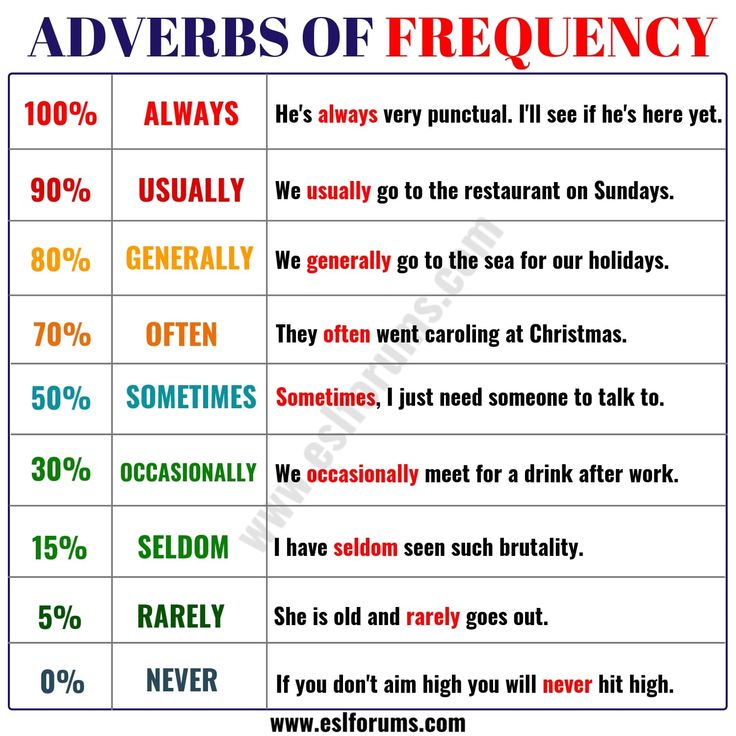 These words might be on the Dolch List, Fry Instant Words, or selected from stories in the reading program. Common practice often includes sending these “sight words” home for students to study and memorize, or drilling with flash cards in school. Students may start with word #1 and progress through the words in the order of frequency. Some teachers, like our friend above, group the words in categories, such as numbers or colors, whenever possible. In essence, high-frequency word instruction is often fully divorced from phonics instruction. While this method works for many students, it is an abysmal failure with others.
These words might be on the Dolch List, Fry Instant Words, or selected from stories in the reading program. Common practice often includes sending these “sight words” home for students to study and memorize, or drilling with flash cards in school. Students may start with word #1 and progress through the words in the order of frequency. Some teachers, like our friend above, group the words in categories, such as numbers or colors, whenever possible. In essence, high-frequency word instruction is often fully divorced from phonics instruction. While this method works for many students, it is an abysmal failure with others.
Overview of suggested restructuring
Integrating high-frequency words into phonics lessons allows students to make sense of spelling patterns for these words. To do this, high-frequency words need to be categorized according to whether they are spelled entirely regularly or not. Restructuring the way high-frequency words are taught makes reading and spelling the words more accessible to all students. The rest of this article describes how to “rethink” teaching of high-frequency words and fit them into phonics lessons.
The rest of this article describes how to “rethink” teaching of high-frequency words and fit them into phonics lessons.
Teach 10–15 “sight words” before phonics instruction begins
Many kindergarten students are expected to learn 20 to 50, or even more, high-frequency words during the year. The words are introduced and practiced in class and students are asked to study them at home. Learning these “sight words” often starts before formal phonics instruction begins.
Children do need to know about 10–15 very-high-frequency words when they start phonics instruction. However, these words can be carefully selected so that they are the “essential words” that are not decodable when the short vowel patterns VC and CVC are taught. Words such as at, can, and had are easier for students to learn using phonics than by simply memorizing them.
We recommend teaching 10–15 pre‐reading high-frequency words only after students know all the letter names, but before they start phonics instruction.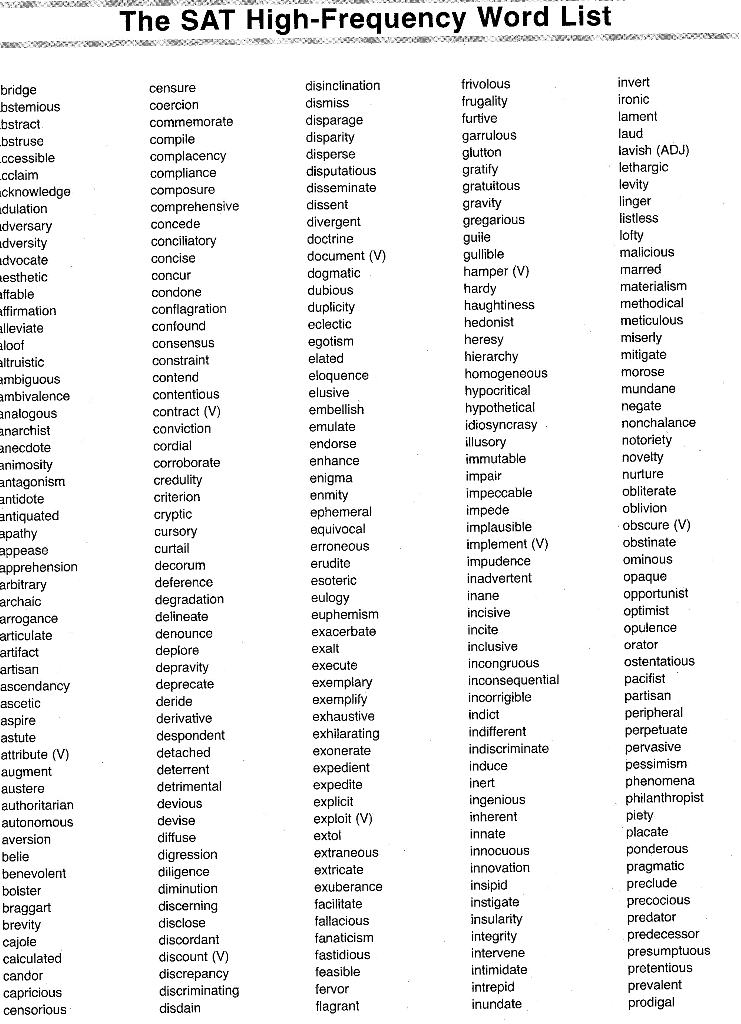 (Students who have not learned their letter names inevitable struggle to learn words that have letters they cannot identify.) Teaching students to read the ten words in Table 1 as “sight words” even before they begin phonics instruction is unlikely to overburden even “at risk” students. These ten words can be used to write decodable sentences when phonics instruction begins. The words in Table 1 are suggestions only, and teachers may revise or add words based on their reading materials and their students. For example, the words
are and said are often added.
(Students who have not learned their letter names inevitable struggle to learn words that have letters they cannot identify.) Teaching students to read the ten words in Table 1 as “sight words” even before they begin phonics instruction is unlikely to overburden even “at risk” students. These ten words can be used to write decodable sentences when phonics instruction begins. The words in Table 1 are suggestions only, and teachers may revise or add words based on their reading materials and their students. For example, the words
are and said are often added.
To teach these ten pre-reading sight words, we recommend introducing one word at a time. Teaching these words in the order listed can minimize confusion for students. For example, the and a are unlikely to be confused, as are I and to. However, to and of are widely separated on the table because both are two-letter words with the letter o, and t and f have similar formations.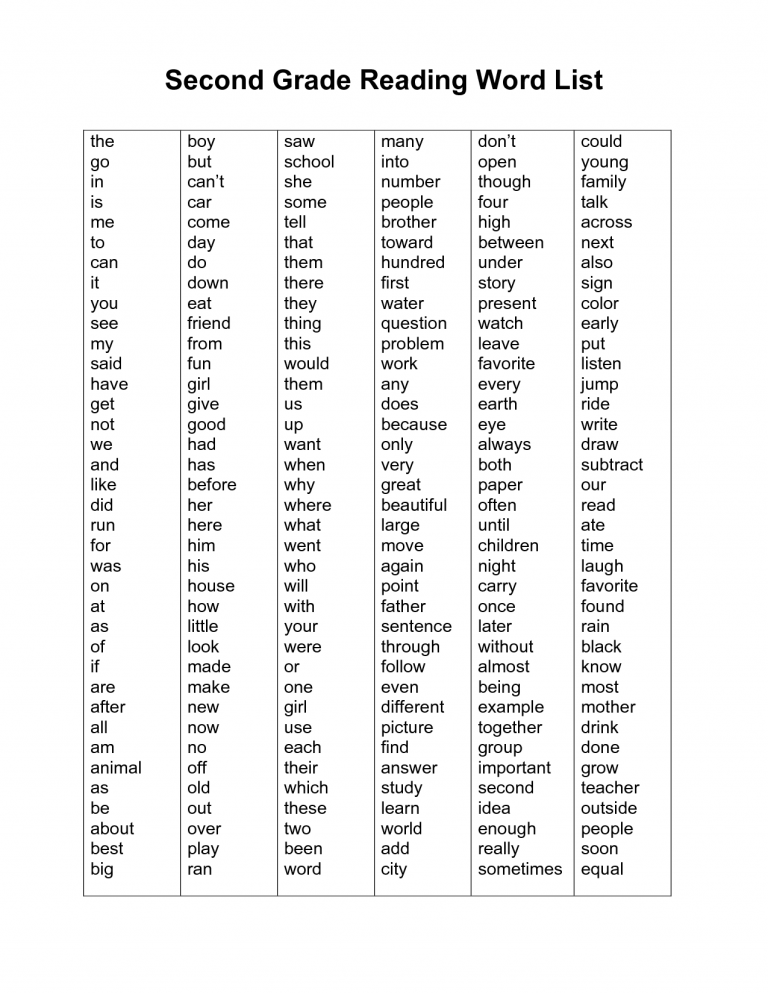
As we recommended above, the words in Table 1 should not be taught or practiced until a student knows all the letter names.
Students can demonstrate they know these words in a number of ways, including (1) finding the word in a list or row of other words, (2) finding the word in a text, (3) reading the word from a card, and (4) spelling the word.
If students know letter sounds and can identify the first sound in a word, the following words can be tied to beginning letter sounds because the initial sound is spelled as expected: to, and, was, you, for, is. The word I is easily recognized by students who know their letter names. On the other hand, the words the, a, and of cannot be tied to known letter sounds.
Teaching a “ditty” to help students learn the, a, and of works for many students. Teachers have had success teaching students to sing the ditties below. It is important that students have the word in front of them when they say the ditty. They should point to the word when they say it in the ditty, and point to the letters when they say them in the ditty.
They should point to the word when they say it in the ditty, and point to the letters when they say them in the ditty.
- The: I can say ‘thee’ or I can say ‘thuh’, but I always spell it ‘t’ ‘h’ ‘e’
- A: I can say ‘ā’ or I can say ‘uh’, but I always spell it with the letter ‘a’
- Of is hard to spell, but not for me. I love to spell of. ‘o’ ‘f’ of, ‘o’ ‘f’ of, ‘o’ ‘f’ of
Table 1: 10 Sight Words for Pre-Readers to Learn
| Word | Dolch Frequency Rank | Fry Frequency Rank |
|---|---|---|
| the | 1 | 1 |
| a | 5 | 4 |
| I | 6 | 20 |
| to | 2 | 5 |
| and | 3 | 3 |
| was | 11 | 12 |
| for | 16 | 13 |
| you | 7 | 8 |
| is | 22 | 7 |
| of | 9 | 2 |
Dolch words are from: Dolch, E.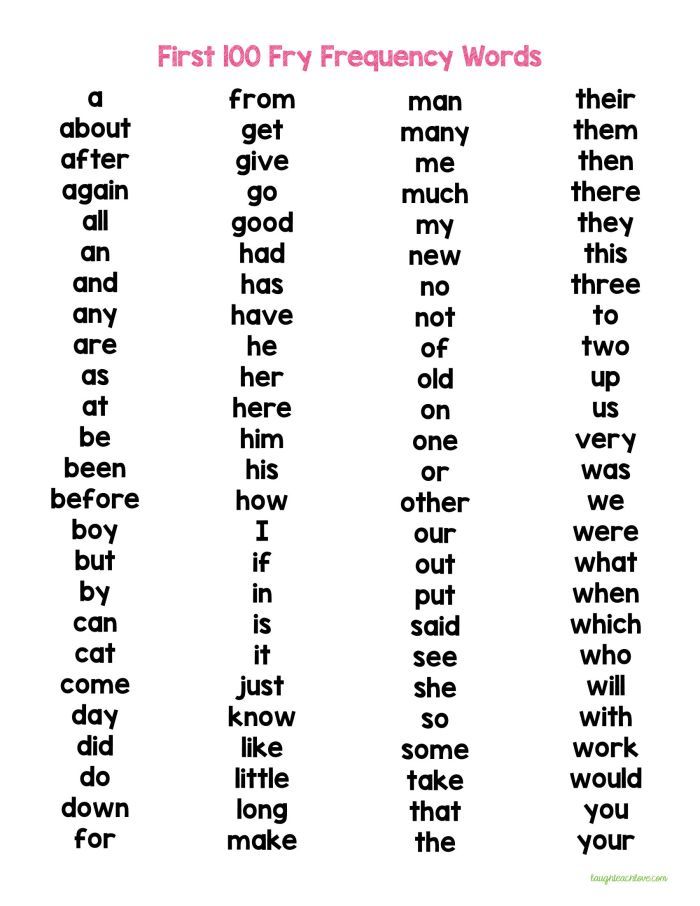 W. (1936). A basic sight vocabulary. The Elementary School Journal, 36(6), 456-460.
W. (1936). A basic sight vocabulary. The Elementary School Journal, 36(6), 456-460.
Dolch Rankings were found on lists at K12 Reader and Mrs. Perkins Dolch Words.
Fry words and rankings are from: Fry, E., & Kress, J.K. (2006). The Reading Teacher’s Book of Lists. Jossey-Bass: San Francisco.
Flash Words and Heart Words defined
For instructional purposes, high-frequency words can be divided into two categories: those that are phonetically decodable and those with irregular spellings. We call high-frequency words that are regularly spelled and thus decodable “Flash Words”.
Although their spelling patterns are easily decoded, Flash Words are used so frequently in reading and writing that students need to be able to read and spell them “in a flash”. Examples of Flash Words at the cvc level are can, not, and did. Irregularly spelled words are called “Heart Words” because some part of the word will have to be “learned by heart.” Heart Words are also used so frequently that they need to be read and spelled automatically.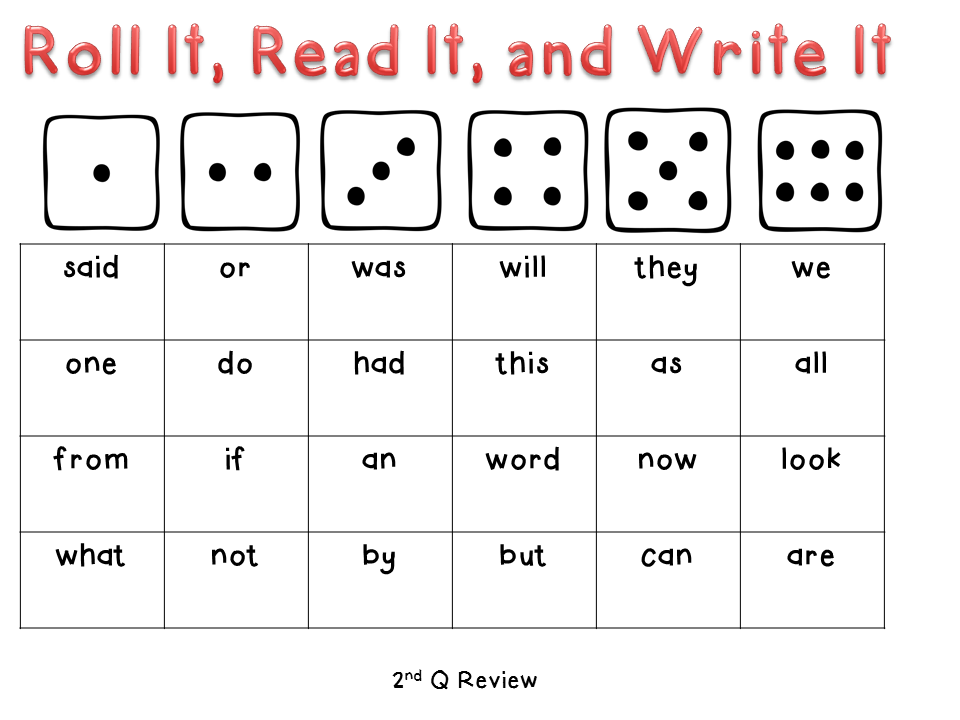 Examples of Heart Words are: said, are, and where.
Examples of Heart Words are: said, are, and where.
Words on any high-frequency word list can easily be categorized into Flash Words and Heart Words. However, be cautioned that a word may change categories. For example, early in a phonics scope and sequence, see may be a Heart Word because the long e spelling patterns haven’t been taught. When students learn that ee spells long e, see becomes a Flash Word. Further, many of the Heart Words can be categorized into words with similar spellings. This article categorizes words on the Dolch List of 220 High Frequency Words (Dolch 220 List)1. The method we use to categorize words on the Dolch 220 List works with any high-frequency word list.
Flash Words
One hundred and thirty-eight words (63%) on the Dolch 220 List are decodable when all regular spelling patterns are considered. Tables 2A, 2B, and 2C show the 138 decodable words categorized by spelling patterns.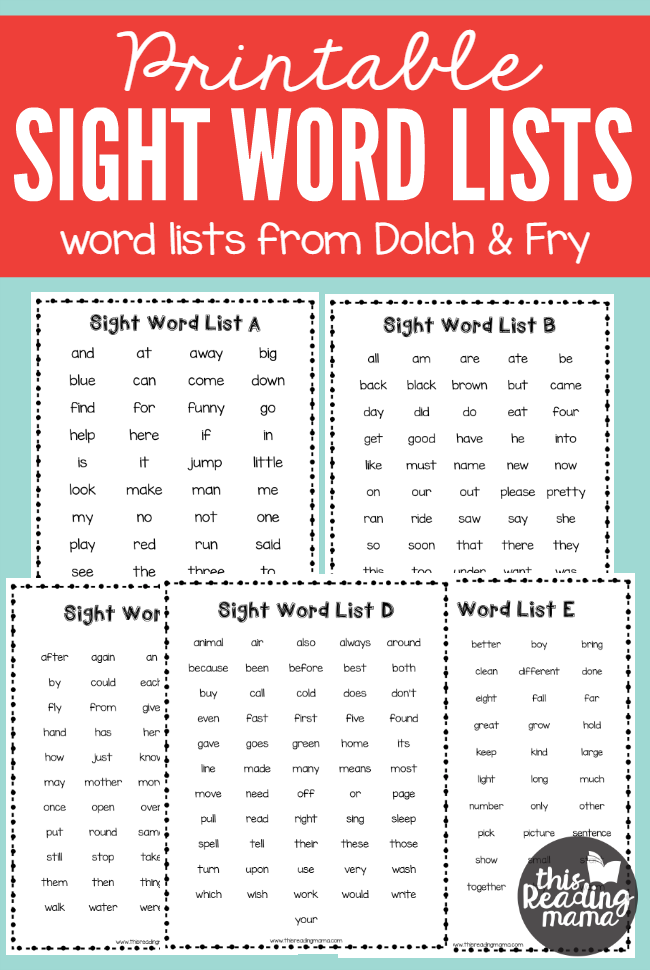 These tables can help teachers determine when to introduce the words during phonics lessons. Table 2A may be most useful for teachers of beginning reading because it lists the 60 one-syllable decodable words with the short vowel spelling pattern.
These tables can help teachers determine when to introduce the words during phonics lessons. Table 2A may be most useful for teachers of beginning reading because it lists the 60 one-syllable decodable words with the short vowel spelling pattern.
Table 2A: Flash Words (Decodable Words)
60 One-Syllable Words with Short Vowel Spelling Patterns
(Numbers in parentheses are the Dolch frequency ranking)
| VC | CVC | Digraphs | Blends | Words Ending in NG and N |
|---|---|---|---|---|
| (Sorted by vowel spelling) | (Sorted by vowel spelling) | (Sorted by digraph) | (Sorted by ending blends, then beginning blends) | (Sorted by ending letters) |
| at (21) | had (20) hot (203) | that (14) | and (3) | sing (213) |
| am (37) | can (42) but (19) | with (23) | just (78) | bring (155) |
| an (72) | ran (111) run (163) | then (38) | must (149) | long (167) |
| it (8) | him (22) cut (188) | them (52) | fast (182) | thank (216) |
| in (10) | did (45) get (51) | this (55) | best (210) | think (110) |
| if (65) | will* (59) yes (60) | much (142) | went (62) | drink (159) |
| on (17) | big (61) red (80) | pick (185) | ask (70) | |
| off* (132) | six (120) well* (109) | wish (217) | its (75) | |
| up (24) | sit (191) let (112) | when (44) | jump (98) | |
| us (169) | not (49) tell (141) | which (192) | help (113) | |
| got (93) ten (153) | stop (131) | |||
| black (151) |
*Students easily understand that two consonants at the end of a word spell one sound.
1The source for words on the Dolch 220 List is: Dolch, E. W. (1936). A basic sight vocabulary. The Elementary School Journal, 36(6), 456-460. Tables in this article show frequency rankings for words on the Dolch 220 list. Rankings for words on the Dolch 220 List can be found in many places, but we did not find a primary source that can be attributable to Dr. Dolch.
Rankings were retrieved on March 15, 2013, from K12 Reader and Mrs. Perkins Dolch Words.
Flash Words that can be taught with spellings students know will vary at any given time, depending on which phonics patterns students have been taught. For example, the words had, am, and can will be decodable when students have learned short a and vc and cvc spelling patterns. That, when, pick, and much will be decodable after students learn digraphs and can read words with digraphs. The words just, went, black, and ask will be decodable when students learn to read words with blends.
Flash Words should be introduced when they fit into the phonics pattern being taught, which is different from teaching them based on their frequency of use.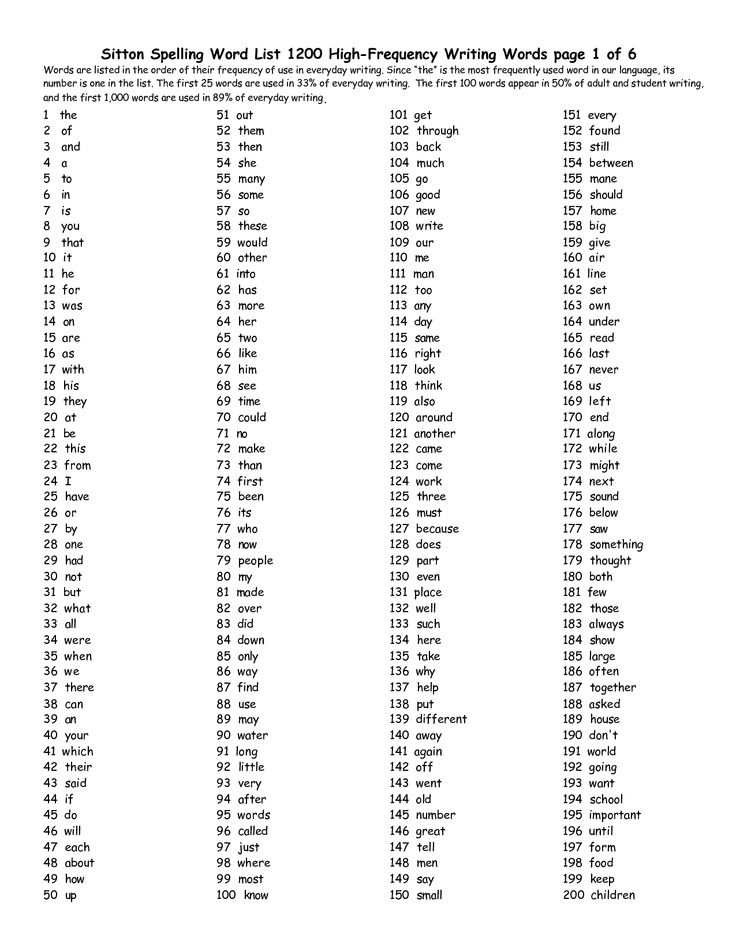 Flash Words are different from other decodable words only because of their frequency. They are called Flash Words because students will need lots of practice to read and spell these words “in a Flash”. These are called “Flash Words” instead of “sight words” because students do not have to memorize any part of Flash Words. They can use their knowledge of phonics patterns to read and spell the words.
Flash Words are different from other decodable words only because of their frequency. They are called Flash Words because students will need lots of practice to read and spell these words “in a Flash”. These are called “Flash Words” instead of “sight words” because students do not have to memorize any part of Flash Words. They can use their knowledge of phonics patterns to read and spell the words.
Flash Words with advanced vowels to teach with early phonics instruction
Table 2B shows 60 one-syllable words with more advanced vowel spelling patterns. A few of these are so frequent that they will need to be taught when students are still learning the short vowel spelling patterns (VC and CVC) during phonics lessons.
Table 2B: Flash Words (Decodable Words)
60 One-Syllable Words With R‐Controlled, Long, and Other Vowel Spellings
(Numbers in parentheses are the Dolch Frequency Ranking)
| r-Controlled Vowels | CV Long Vowel | VCe (silent e) | Vowel Teams with Long Vowel Sounds | Vowel Teams with Other Vowel Sounds |
|---|---|---|---|---|
| (Sorted by vowel spelling) | (Sorted by vowel spelling) | (Sorted by vowel spelling) | (Sorted by vowel sound, then vowel spelling) | (Sorted by vowel sound, then vowel spelling) |
| for* (16) | I* (6) | came (69) | play (127) | out* (31) |
| or* (123) | he* (4) | take (94) | may (130) | round (140) |
| start (150) | she* (15) | make (114) | say* (183) | found (200) |
| far (205) | be* (33) | made (162) | see* (48) | down* (40) |
| her* (28) | we* (36) | gave (164) | green (99) | now* (66) |
| first (146) | me* (58) | ate (177) | sleep (116) | how* (88) |
| hurt (186) | go* (35) | like (53) | keep (143) | brown (117) |
| so* (47) | ride (76) | three (170) | look (26) | |
| no* (68) | five (119) | eat (125) | good (82) | |
| my* (56) | white (152) | read (197) | new (148) | |
| by* (103) | clean (208) | soon (161) | ||
| fly (138) | right (90) | draw (207) | ||
| try* (147) | light (184) | saw* (106) | ||
| why (198) | own (199) | |||
| show (202) | ||||
| grow (209) |
* Many programs teach these words as Heart Words when students are still learning to read words with short vowels.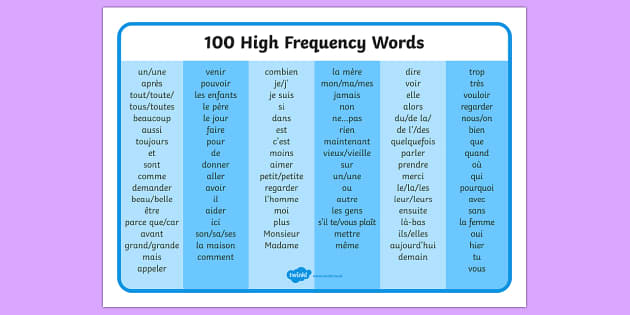
Traditionally, many words in Table 2B would be taught as “sight words” and not included as part of phonics lessons. These words might be introduced as they are encountered in a story, or they might be taught in order. For example, he would be taught as high-frequency word #4, then she taught as high-frequency word #12, with we (#26), be (#33), and me (#58), following later.
Under the new model, words with asterisks in Table 2B are still introduced when short vowels are being taught. The difference in the new model is that these words are grouped together by vowel spelling pattern to make it easier for students to remember the words. Instead of teaching he in isolation as a word to be memorized, we teach he, be, we, me, and she together (as shown in the CV column in Table 2b) and point out that the letter e spells the long e sound. Go, no, and so can be taught together, as can my, by, and why.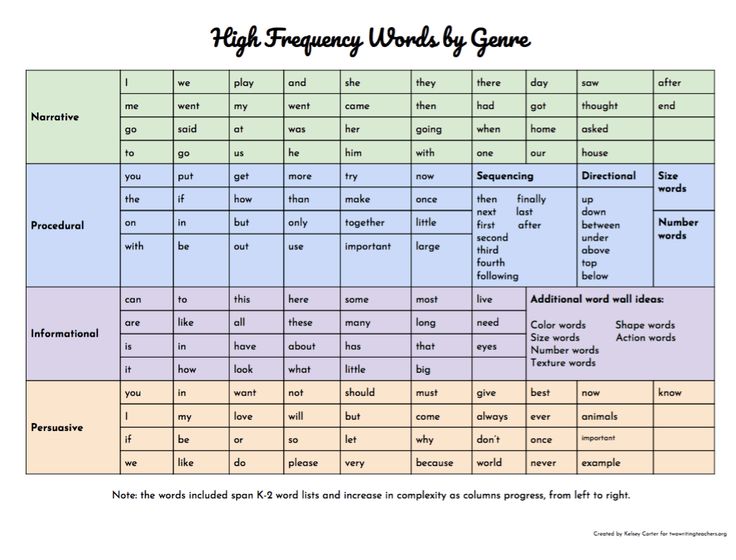
Students will learn words more easily when grouped together by similar spelling than by memorizing words one at a time as whole units. If the curriculum requires a Flash Word to be taught before the vowel pattern has been introduced, teachers can refer to Table 2B to find words that can be grouped together.
Flash Words with two and three syllables
Table 2C shows 16 Flash Words with two syllables and one Flash Word with three syllables. We recommend teaching these words after students have learned to read two‐syllable words in phonics instruction. If these words must be introduced earlier, students will learn them more easily if the teacher breaks the words into syllables and shows any known letter sounds in each syllable. This way students learn to read each syllable and blend the syllables into a word, instead of having to memorize the whole word.
Table 2C: Flash Words (Decodable Words)
17 Two-Syllable Words and 1 Three-Syllable Word
(Numbers in parentheses are the Dolch Frequency Ranking)
| CVC | "A" Spells Schwa in First Syllable | Short Vowels and r-Controlled Vowels | Short Vowel and Long Vowel | All Other Two-Syllable Words | Three-Syllable Word |
|---|---|---|---|---|---|
| seven* (134) | about* (84) | after (108) | myself (139) | little (39) | every** (96) |
| upon (211) | around* (85) | never (133) | open* (165) | over (73) | |
| away* (101) | better (172) | funny (175) | going (115) | ||
| under (196) | yellow 118) | ||||
| before (124) |
* These words have a schwa sound in the first or second syllable.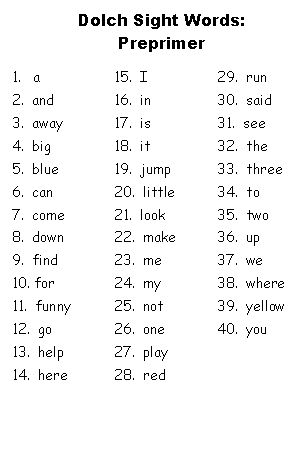
** This word is often pronounced with two syllables, especially in conversation.
Heart Words
The Dolch 220 List has 82 Heart Words (37%) that are shown on Tables 3A and 3B. Heart Words have Heart Letters, which are the irregularly spelled part of the word. For example, o is the Heart Letter in the words to and do.
Some of the Dolch Heart Words with similar spelling patterns can be grouped together, even though the spelling patterns are not regular. Table 3A (on the next page) shows 45 Heart Words grouped according to similar spelling patterns. The table also lists twelve words not on the Dolch List. These twelve words have similar spelling patterns to the Dolch words listed, and the words are likely to be words already in young students’ vocabularies. For example, could and would are Dolch words. We recommend adding should when could and would are taught, even though it is not on the Dolch 220 List.
The groups of words in Table 3A can be added to any phonics or spelling lesson, with the Heart Letters pointed out. For example, the words his, is, as, and has can all be taught as vc and cvc words in which the letter s is the Heart Letter because it spells the sound /z/.
For example, the words his, is, as, and has can all be taught as vc and cvc words in which the letter s is the Heart Letter because it spells the sound /z/.
Table 3A: Heart Words
59 Words Grouped by Similar Spelling Patterns
45 Words from the Dolch List and 14 Not on the Dolch List
(Numbers in Parentheses Are the Dolch Frequency Ranking)
(Diamond [♦] indicates word is not on the Dolch List, but it fits the spelling pattern)
| Unusual Spelling Pattern | High-Frequency Words |
|---|---|
| s at the end of the word spells /z/ | his (13), is (27), as (32), has (166) |
| v is followed by e because no English word ends in v | have (34), give (144), live (206) |
| o-e spells short u /ŭ/ | some (30), come (64), done (180) |
| o spells /ōō/ (as in boot) | to (2), do (41), into (77) |
| rhyming words spelled with the same last four letters | there (29), where (95) |
| s spells /z/ in a vce word | those (179), these (212) |
| all spells /ŏll/ | all (25), call (167), fall (193), small (195), ball ♦ |
| oul spells /ŏŏ/ (as in cook) | could (43), would (57), should ♦ |
| e at the end is after a phonetic r-controlled spelling | were (50), are (63) |
| vcc and cvcc words with o spelling long o /ō/ | old (102), cold (136), hold (173), both (190) |
| cvcc words with i spelling long i /ī/ | find (167), kind (189), mind ♦ |
| words similar in meaning and spelling | one (54), once (160) |
| a after w sometimes spells short o /ŏ/ | want (86), wash (201), watch ♦ |
| ue spells /ōō/ as in boot | blue (79), glue ♦, clue ♦, true ♦ |
| u spells /ŏŏ/ (as in cook) | put (91), full (178), pull (187), push ♦ |
| rhyming words with silent l | walk (121), talk ♦ |
| rhyming words - the letter a spells short i or short e (depending on dialect) | any (83), many (218) |
| oo at the end of a word spells /ōō/ (as in boot) | too (92), boo ♦, moo ♦ |
| or spells /er/ | work (145), word ♦, world ♦ |
| uy spells long i /ī/ | buy (174), guy ♦ |
Teaching Heart Words
Table 3B shows 37 Heart Words not easily grouped by spelling patterns. Most of the words are more difficult for spelling than for reading.
Most of the words are more difficult for spelling than for reading.
As with all Heart Words, these words can also be incorporated into phonics instruction when students learn to read the regularly spelled letters a word. For example, when students know the digraph th, they and their can be introduced. The digraph th in both these Heart Words is a regular spelling for the sound /th/. The Heart Letters are ey in they and eir in their. Similarly, the Heart Letter in the word what is a, and the Heart Letter in the word from is o.
Table 3B: Heart Words
37 Words that Do Not Fit into Spelling Patterns
(Numbers in parentheses are the Dolch Frequency Ranking)
| the (1) | very (71) | here (105) | does (154) | use (181) |
| a (5) | yours (74) | two (122) | goes (156) | carry (194) |
| of (9) | from (81) | again (126) | write (157) | because (204) |
| you (7) | don’t (87) | who (128) | always (158) | together (214) |
| was (11) | know (89) | been (129) | only (168) | please (215) |
| said (12) | pretty (97) | eight (135) | our (171) | shall (219) |
| they (18) | four (100) | today (137) | warm (176) | laugh (220) |
| what (46) | their (104) |
Students enjoy drawing a heart above Heart Letters, and the hearts help them remember the irregular spellings.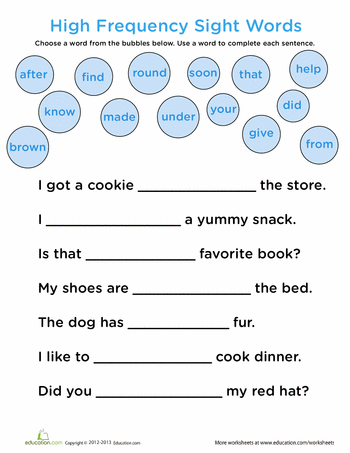
For example, in the word said, the hearts would go above ai because those letters are an unexpected spelling for short e (/ĕ/). A student’s practice card for the word said is shown at the right.
Implementing the new model
In order to implement the new phonics-based model for teaching high-frequency words, teachers will need to fit high-frequency words into phonics instruction. To do this, generally a committee of three or four kindergarten and first grade teachers organizes their lists of high-frequency words according to Heart Words and Flash Words by spelling patterns. Next they determine when and how high-frequency words fit into the phonics scope and sequence. These same teachers provide professional development to show other teachers how to implement the new model.
Sometimes a coordinated effort to change the way high-frequency words are taught is not an option, and teachers are able to only partially implement the suggestions in this article.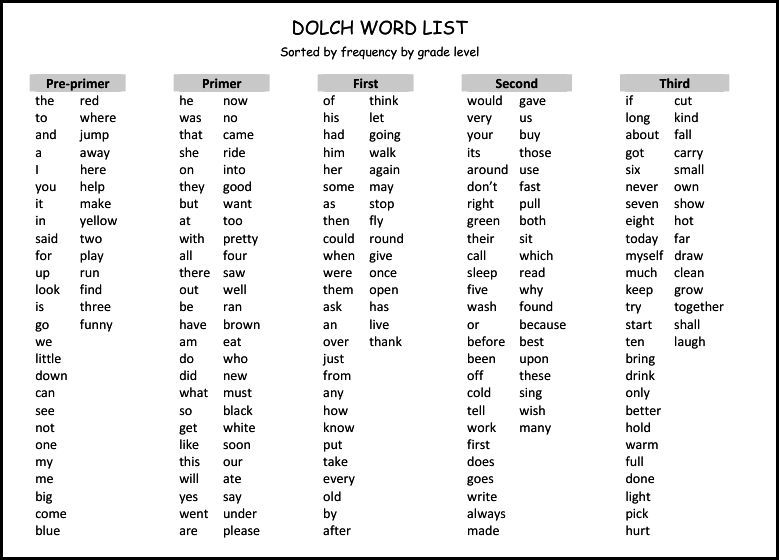 These teachers continue to introduce the words as determined by their curriculum. However, they tell students whether the “sight word” is a Flash Word or a Heart Word, and they introduce the words by teaching letter–sound relationships as outlined in this article. Further, teachers introduce words with similar spelling patterns whenever possible. For example, if only the word would is scheduled to be introduced, they also teach could and should, which fit the spelling pattern. Finally, these teachers do not hold students accountable for high-frequency words that are beyond the spelling patterns that have been taught in phonics lessons.
These teachers continue to introduce the words as determined by their curriculum. However, they tell students whether the “sight word” is a Flash Word or a Heart Word, and they introduce the words by teaching letter–sound relationships as outlined in this article. Further, teachers introduce words with similar spelling patterns whenever possible. For example, if only the word would is scheduled to be introduced, they also teach could and should, which fit the spelling pattern. Finally, these teachers do not hold students accountable for high-frequency words that are beyond the spelling patterns that have been taught in phonics lessons.
The new model allows a different approach for working with students who have difficulty learning high-frequency words. For example, students working on short vowel patterns may confuse her and here, which are often introduced early as part of the “sight word” list. A teacher who recognizes the source of this confusion would not expect students to continue trying to memorize the two words.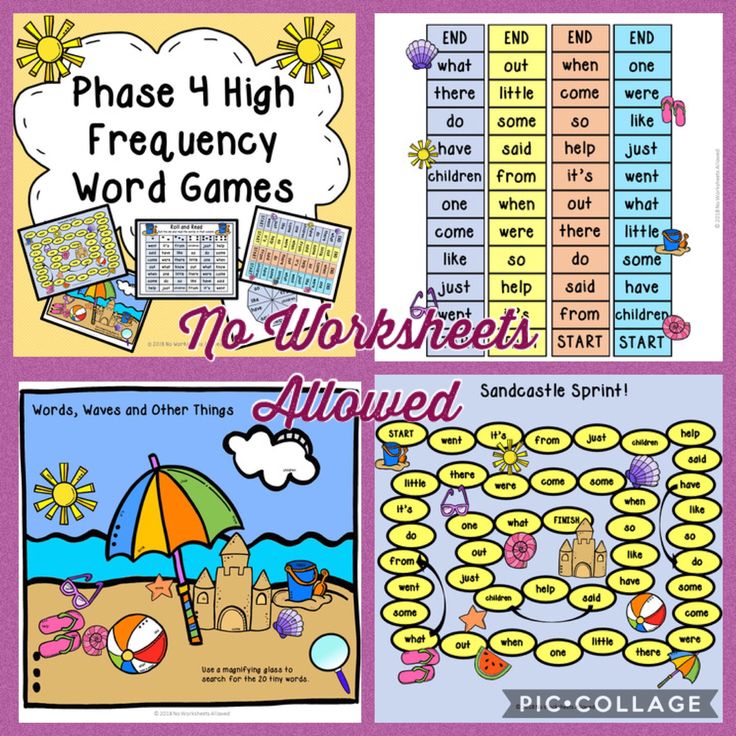 Instead, the teacher would include her as part of instruction on r-controlled vowels and include here when silent e is taught. Students will be less likely to misread or misspell these words when they understand the relation of the spelling er to the sound /er/ and the spelling ere to the sound /ēr/.
Instead, the teacher would include her as part of instruction on r-controlled vowels and include here when silent e is taught. Students will be less likely to misread or misspell these words when they understand the relation of the spelling er to the sound /er/ and the spelling ere to the sound /ēr/.
Traditionally, students would have continued struggling with and failing to memorize these easily confused words. With the new model, those students are not held accountable for accurately reading and spelling the words until they can understand and use the sound–spelling correspondences. All teachers using this approach say that students learn to spell and read the words much more easily than with the traditional approach.
About the authors
Linda Farrell and Michael Hunter are founding partners of Readsters, LLC. They provide professional development and write curriculum to support excellent reading instruction to students of all ages.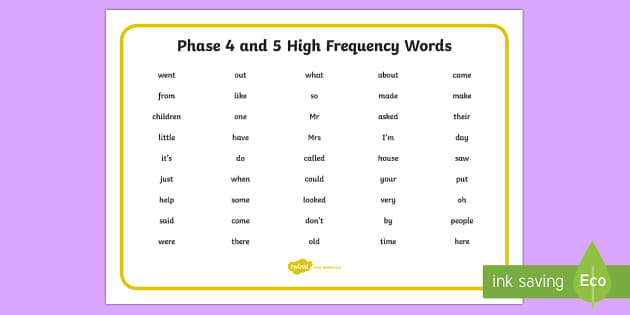 Their favorite work is in the classroom where they can model effective reading instruction and coach teachers. Their most unusual work so far has been helping develop early reading instruction for children in Africa who are learning to read in 12 different mother tongue languages that Linda and Michael don’t even speak.
Their favorite work is in the classroom where they can model effective reading instruction and coach teachers. Their most unusual work so far has been helping develop early reading instruction for children in Africa who are learning to read in 12 different mother tongue languages that Linda and Michael don’t even speak.
Tina Osenga was a founding partner at Readsters, and she is now retired.
High Frequency words: A teacher's guide
What are High Frequency Words?
The words that are most frequently used in the written text are called High Frequency Words. For example, 'the,' 'have,' and 'to,' may not have any specific meaning on their own, but these words contribute considerably in providing meaning to a sentence as a whole. Some high frequency words are also called sight words or tricky words. These words are not only difficult to sound out, but most of these also have a relatively abstract meaning which is difficult to explain to young learners.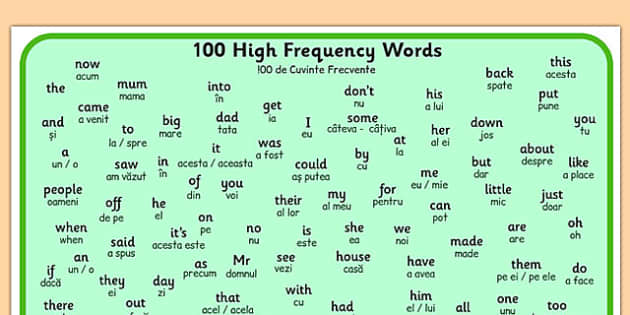 It is easy for children to learn words like "apple" and "boat" because these can be easily related to a picture or a real object, but it's tricky to explain the words like "of" or "the" because there's no point of reference.
It is easy for children to learn words like "apple" and "boat" because these can be easily related to a picture or a real object, but it's tricky to explain the words like "of" or "the" because there's no point of reference.
Phonics is the foundation of reading, and teaching children to sound out words correctly helps them learn to recognise letters and sounds.Many schools still use traditional methods of teaching phonics, which often lead to frustration among children who struggle to understand the rules. Children can often encounter an irregular spellings that don't meet any obvious CVC spelling patterns. An unexpected spelling often contradicts what is taught within formal phonics instruction. Using frequency word sheets might help children to quickly identify these tricky words without having to identify and blend all the letter sounds.
Fortunately, there are now several effective ways to teach phonics.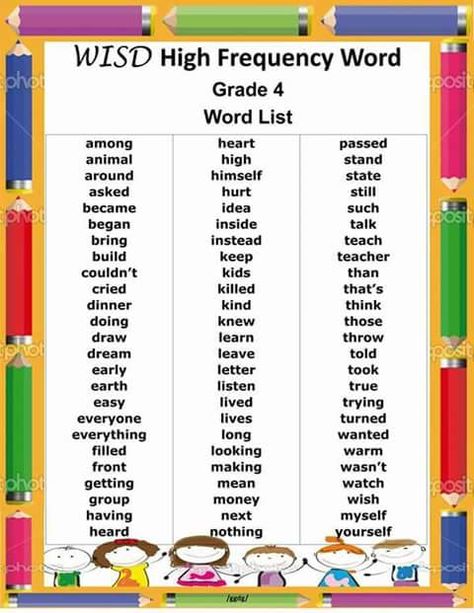 One method involves breaking down words into syllables (a vowel plus consonant) and teaching each syllable separately. This approach makes learning to read simple because it focuses on individual sounds rather than whole words. Primary schools are bombarded with advice around reading and it's sometimes difficult to make sense of the latest phonics programme when it might contradict what you have been taught during teacher training. The Internet is scattered with printable teaching resources and phonics lessons. The important thing is school needs to focus on is consistency throughout the different year groups.
One method involves breaking down words into syllables (a vowel plus consonant) and teaching each syllable separately. This approach makes learning to read simple because it focuses on individual sounds rather than whole words. Primary schools are bombarded with advice around reading and it's sometimes difficult to make sense of the latest phonics programme when it might contradict what you have been taught during teacher training. The Internet is scattered with printable teaching resources and phonics lessons. The important thing is school needs to focus on is consistency throughout the different year groups.
Another popular method is called Whole Language, which teaches children to identify letter patterns and blend sounds together. The goal is to help children develop a strong vocabulary and become familiar with different types of words. Whole language is based on the idea that children should be taught to read through real books instead of just being given worksheets.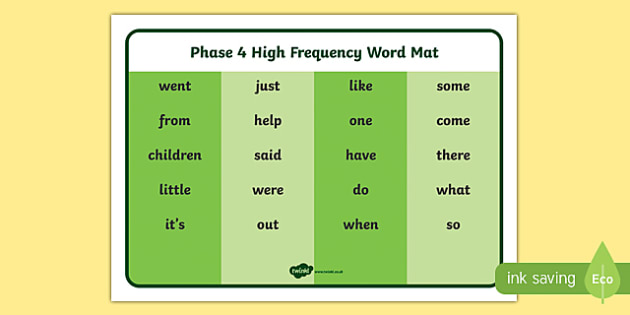 Children need to hear words spoken aloud, and they need to practice recognizing and blending sounds together.
Children need to hear words spoken aloud, and they need to practice recognizing and blending sounds together.
Finally, some teachers prefer to combine phonics and whole language. They break down words into syllables and teach children to recognize those syllables individually. Then they teach children to blend the syllables together to form complete words. There are pros and cons to each method, but the bottom line is this: Teaching children to read well is one of the most powerful tools parents and teachers can facilitate.
Why is it important to focus on high frequency words?
Children frequently come across high frequency words while reading texts. Due to this, it is important for the children to pronounce these words, read them correctly, spell them, and know what they indicate within a sentence.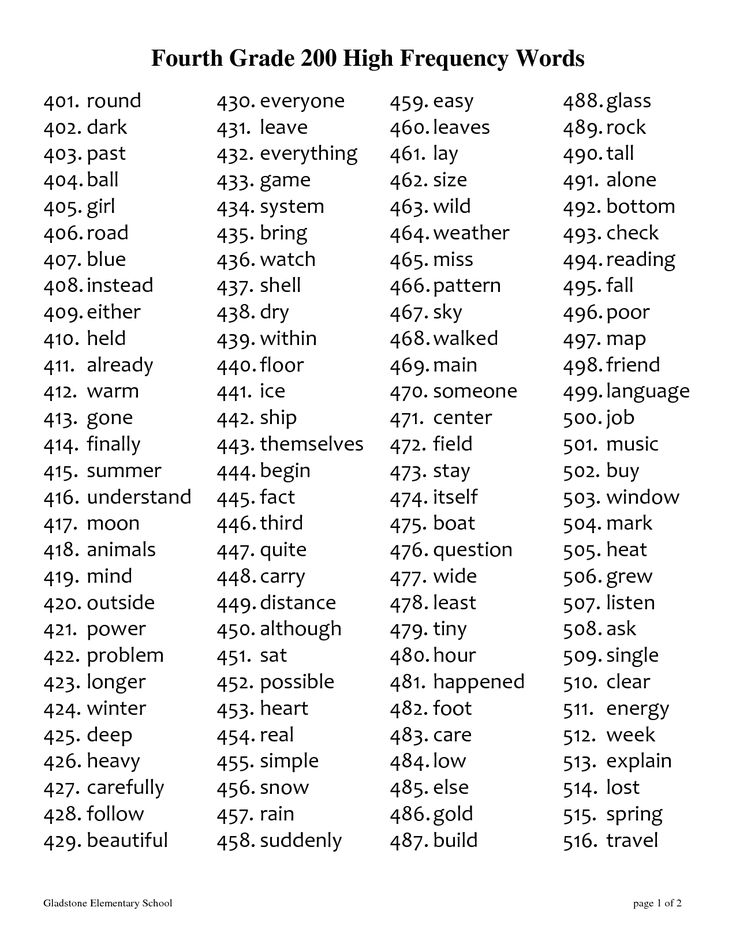 These words are considered to be a crucial part of literacy development as children will be frequently using these words in writing too.
These words are considered to be a crucial part of literacy development as children will be frequently using these words in writing too.
Research suggests that there are 16 high frequency words that constitute around a quarter of every text, for both children and adults, which shows exactly why it is important for children to understand these words.
Words like 'I' 'and' 'he' and more complex words such as 'then' 'that' and 'went' are commonly used as we read and write. An educated adult might not notice, but these words can be very tricky for children if they aren't taught how to use these words properly.
Learning and being able to identify high frequency words offers more confidence to the children. If a young learner can already identify a quarter of the words in a written text, they are more likely to become more interested to continue reading.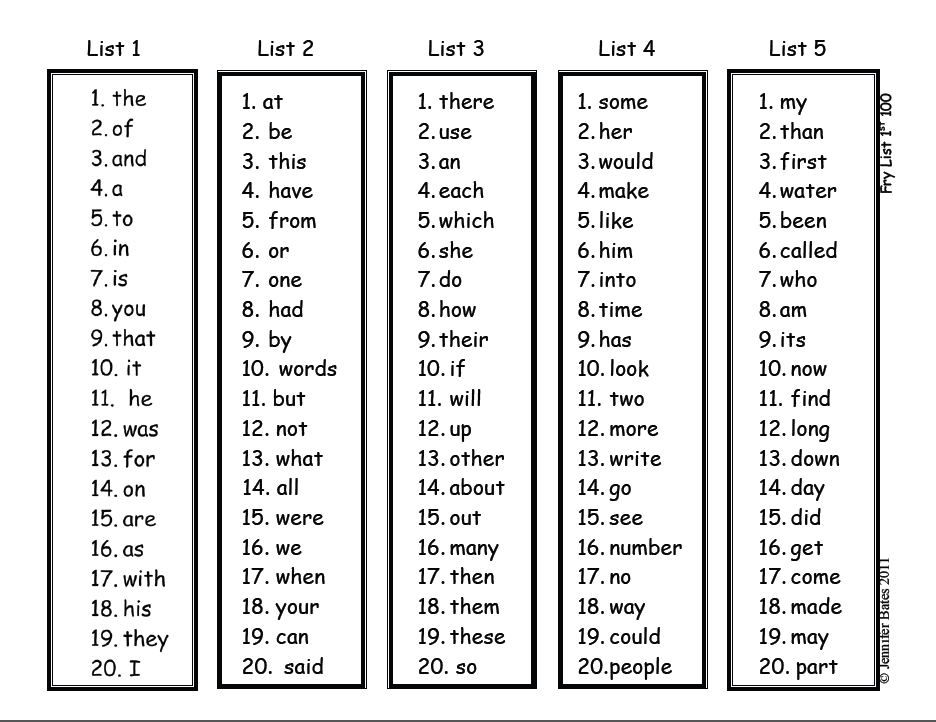 Being able to recognize and read high frequency words can make reading and writing easier for children in the early years of their educational life.
Being able to recognize and read high frequency words can make reading and writing easier for children in the early years of their educational life.
A list of high frequency words
What are the strategies to teach children high frequency words?
Phonics as a whole and high frequency words constitute a fundamental part of a young learners' primary education. These establish the basis for writing and reading. Therefore, it is important to teach high frequency words effectively. Following are some of the tools that can be used to teach high frequency words to the students:
- Flashcards: These provide the most popular way to teach high frequency words. The teacher may cut mini flashcards out and use them to play a variety of activities and frequency word games that involve repetition and improve students' memory of high and medium frequency words.
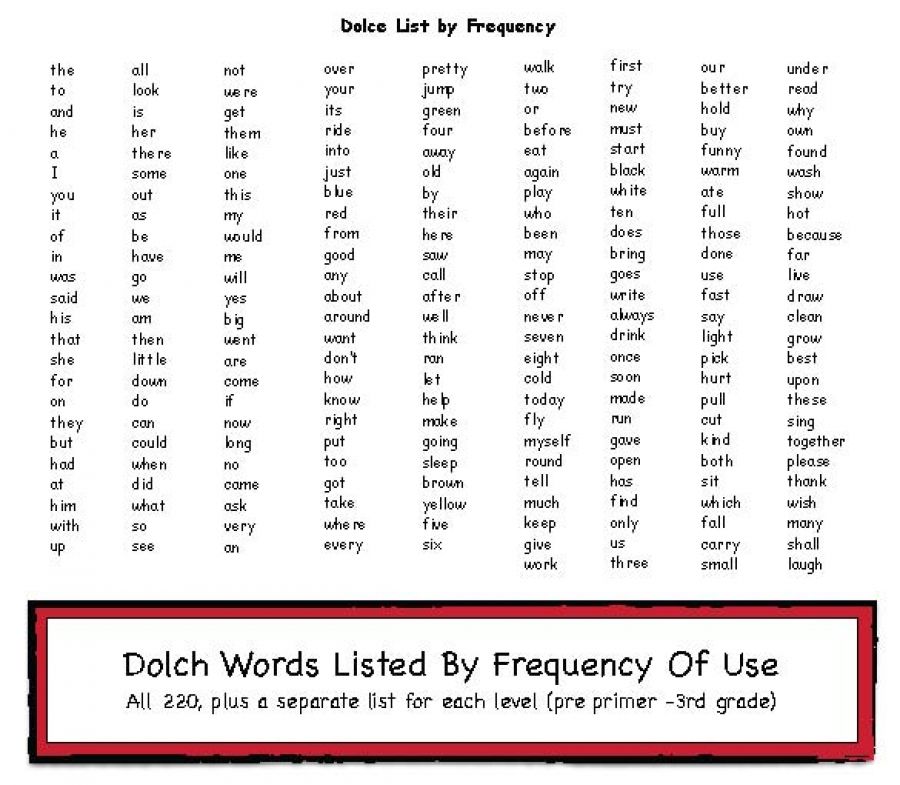 Every week flashcards can be replaced with new flashcards having more complex words in terms of frequency.
Every week flashcards can be replaced with new flashcards having more complex words in terms of frequency.
- Dictation passages: These act as a great source to assess children's knowledge of high frequency words and reading skills at the same time. Young learners are provided with a piece of writing with the blank spaces and they are asked to fill in the blanks with the missing high frequency words. This is a kind of activity, which makes children familiar with the high frequency words themselves and helps them to enhance their fluency of reading at school.
- Daily reading sessions: These take place in the classroom and children may also get high frequency word lists for home which they have to memorize every week.
- Look, cover, write, check: It is a popular way to teach high frequency words to the students.
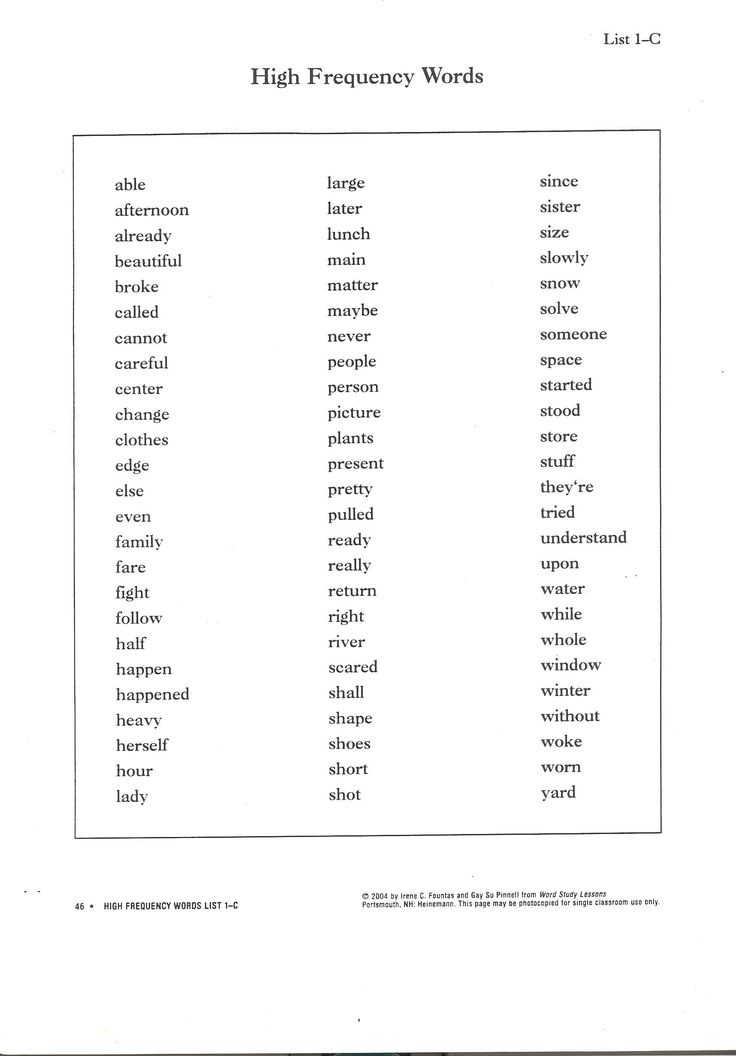 Children say the word in a loud voice as well as spell and write these words correctly. This method is effective for word recognition, of the words as well as memorization of the sounds.
Children say the word in a loud voice as well as spell and write these words correctly. This method is effective for word recognition, of the words as well as memorization of the sounds.
- At Structural Learning, we have been using a playful approach using the block building process. Children can quickly build words using different phonics combinations.
Developing vocabulary using Writers Block
How to help children practise using high frequency words?
Teaching high frequency words to children is just the initial part of the process. To improve their learning, young learners need practice.
A popular way to practise high frequency words is to use a word mat. A word mat contains high frequency lists of 100 to 200 words that the young learners need to know. These mats provide a powerful revision and visual tool in the classroom, and children may use them when they are reading or writing.
Another effective way is a word search. When children are looking for high frequency words, they don't only learn how to spell these words but also develop strong word recognition skills. A word search is an incredible visual tool and also a fun way for young learners to practise this significant part of their learning.
Teachers may improve their young learners' beginner reading skills by engaging them in a high frequency words game! By concentrating on mastering the most widely used words, a high frequency words game may help a child develop his reading proficiency. After learning to read and write high frequency words children will not only build on their vocabulary, but they will also learn new sight words, and improve their reading comprehension.
Teachers may display high frequency words in a visually stimulating and engaging way so that children may consistently review their high-frequency words lists.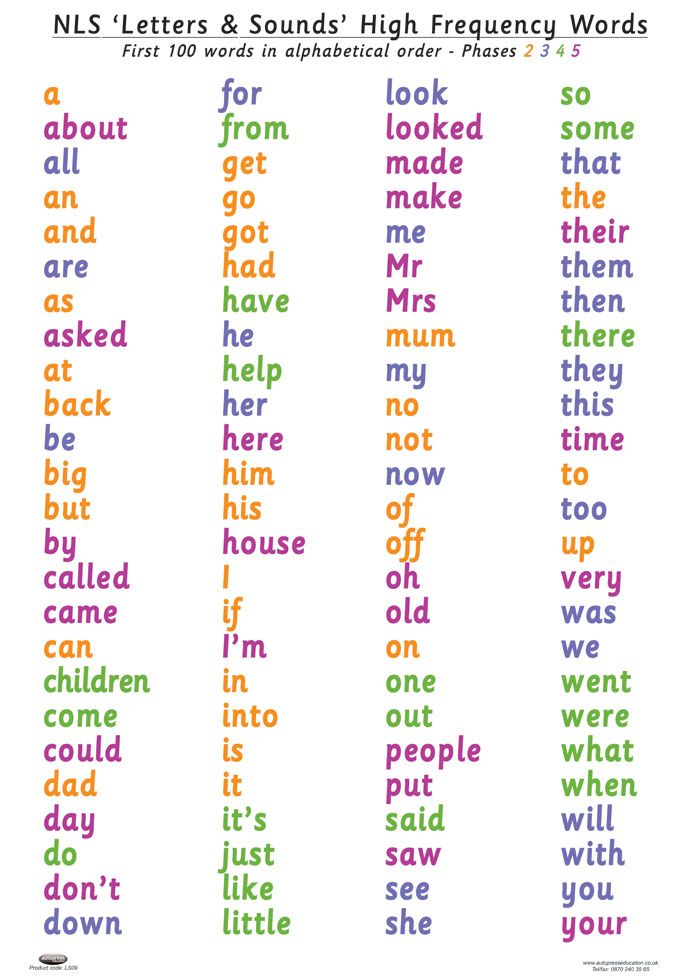 These can be high-frequency word cards, resource packs, word mats, spelling resources, posters, or anything that can be displayed in the classroom which can be used by the children to check and refer to.
These can be high-frequency word cards, resource packs, word mats, spelling resources, posters, or anything that can be displayed in the classroom which can be used by the children to check and refer to.
Building words using Writer's Block
Embedding high frequency words into classroom practice
One more way to help children practise high frequency words is through playing a memory game in the classroom. A memory game may enhance other brain functions, such as focus, concentration and attention. A good memory game that improves short-term memory can have a positive impact on a person's long-term memory too. If you are interested in this area you might want to look at our article on retrieval practice.
Despite the name, this strategy can be quite engaging and helps strengthen the memory trace. The process can be embedded into reading games where children have to recall key information.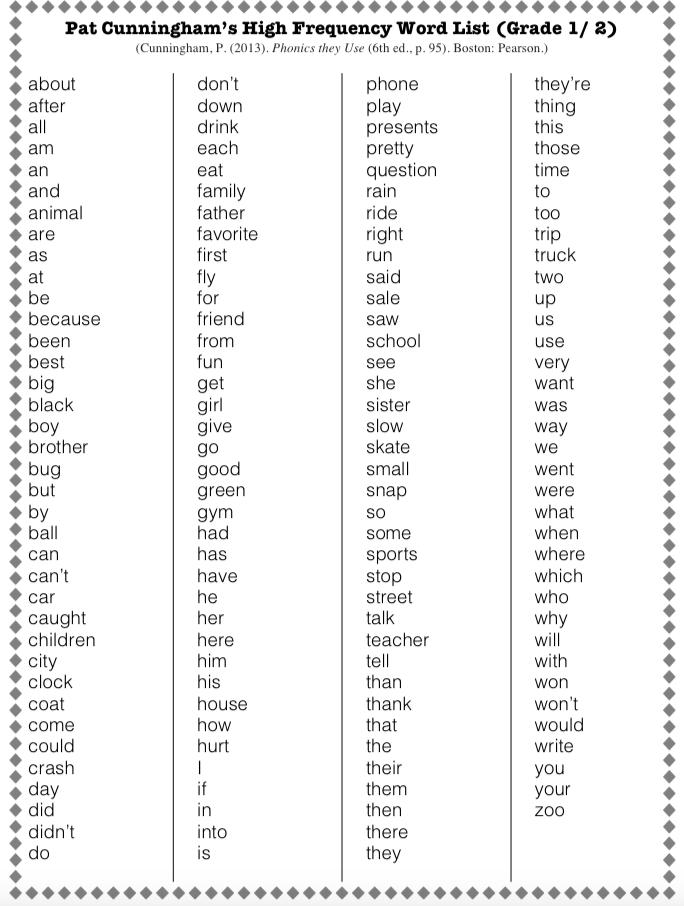 Frequency word games can be a great way of camouflaging retrieval practice into an engaging experience. Once you have established your frequency lists, you can then begin to create games around these keywords. The strategy is not restricted to the English language, MFL teachers can create French frequency lists and use the same process of retrieval.
Frequency word games can be a great way of camouflaging retrieval practice into an engaging experience. Once you have established your frequency lists, you can then begin to create games around these keywords. The strategy is not restricted to the English language, MFL teachers can create French frequency lists and use the same process of retrieval.
High frequency words are those words that occur most frequently in written texts, for example, "it", "as", "the" and "with". These building-blocks of vocabulary have little meaning alone, but they contribute considerably as a whole to the meaning of a sentence. These are the words that may not be able to be pictured, and as such, they simply must be understood and memorized.
It is recommended that children learn how to read these words as these words will make up a huge proportion of the words young learners will be reading in everyday texts.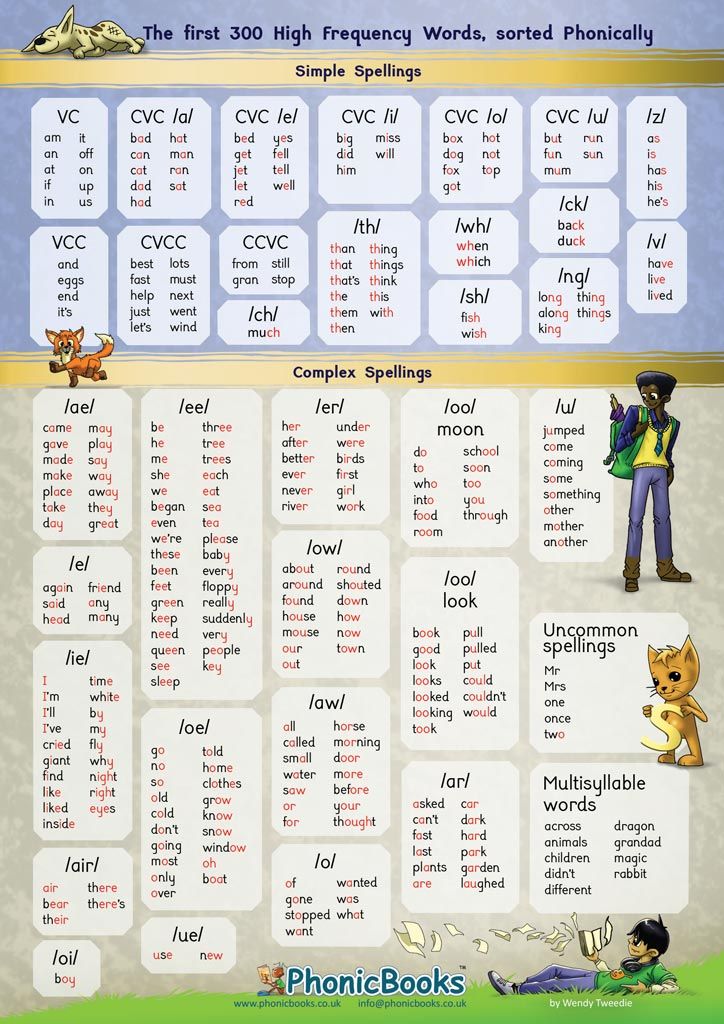 They must also learn to spell high frequency words as they would frequently use these a great deal in their writing. Good readers are quick to identify high frequency words, they don't have to work hard to decode them. Sight words are most likely to be "high-frequency" words, which appear most frequently in our language.
They must also learn to spell high frequency words as they would frequently use these a great deal in their writing. Good readers are quick to identify high frequency words, they don't have to work hard to decode them. Sight words are most likely to be "high-frequency" words, which appear most frequently in our language.
High-frequency and low-frequency keywords and expressions
One of the defining moments in the process of effective website promotion is filling the thematic content on its pages with keywords and expressions or, as they say in the circle of professionals - keywords . The final success of promoting the resource to the “tops” of search engines for certain search queries of Internet users will largely depend on how skillful the selection of the latter will be.
Speaking about keywords and expressions, it is worth noting that in the circle of specialists it is customary to distinguish between two main groups - high-frequency (HF) and low-frequency (LF).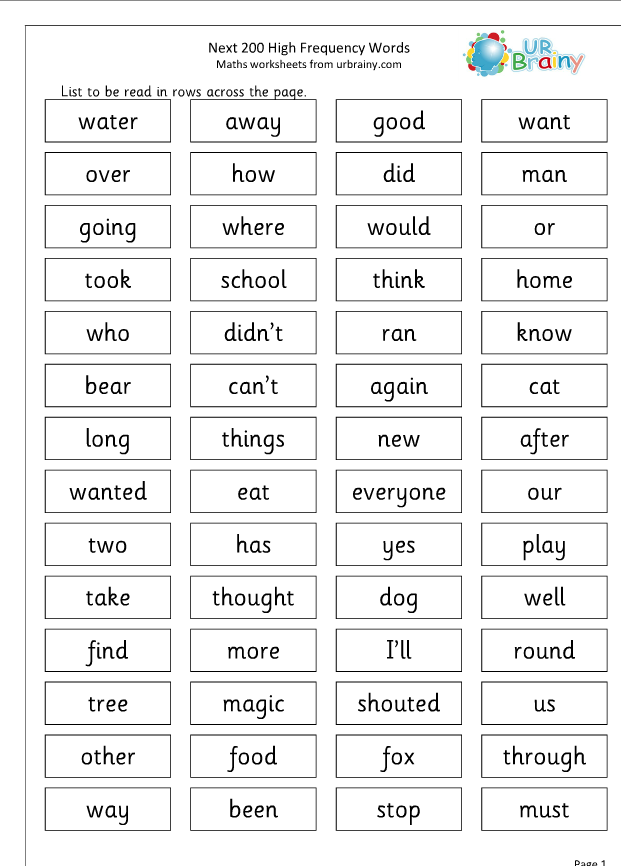 As for the representatives of the first group, they, as a rule, represent the most common (popular) search queries that are found in a particular area. Low-frequency speakers, on the contrary, are words or phrases that, in comparison with high-frequency speakers, are much less common when Internet users compose search queries on a particular topic.
As for the representatives of the first group, they, as a rule, represent the most common (popular) search queries that are found in a particular area. Low-frequency speakers, on the contrary, are words or phrases that, in comparison with high-frequency speakers, are much less common when Internet users compose search queries on a particular topic.
Thus, the presence of two main groups of keywords determines two basic web portal search engine optimization strategies regarding the use of keywords. The first of them involves the introduction of a relatively small number of high-frequency keywords into the thematic content of the site. The second, on the contrary, provides for filling the text material of the web resource with numerous low-frequency search queries.
Of course, in our opinion, it is difficult to give preference to any one strategy in the process of search engine optimization, and that is why, as practice shows, experienced webmasters or SEO-optimizers, promoting their Internet offspring, resort to the services of both.
And yet, in some cases, according to experts, it is worth giving preference to one strategy. For example, if we are talking about a young project that has recently started on the network, then in this situation it is recommended to fill its thematic content in line with the second strategy - with an abundance of low-frequency speakers. Why, you ask? The answer is quite simple: according to statistics, it will be quite difficult for such a resource to “compete” in competition with already popular websites of identical topics, which use high-frequency words and expressions in the structure of their texts and are in the first roles in search engine rankings. However, if you resort to the second strategy and introduce more low-frequency keywords into the content of a young site, then the optimizer effect can exceed the wildest expectations - for such keywords, the resource can quickly get to the leading positions of search engines.
Summing up, I would also like to draw the reader's attention to the fact that it is possible to find out to which particular group a particular keyword or phrase belongs in line with a particular subject, thanks to specialized Internet resources (of which there are a huge number today - for example , http://www.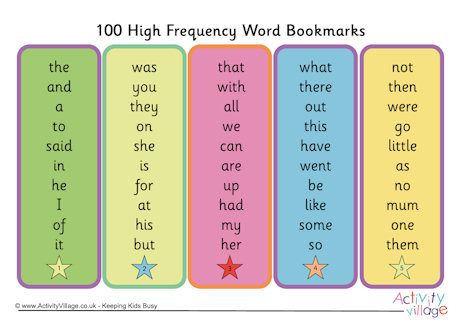 directline.su/popularity-analyzer/), as well as thanks to individual services of the search engines themselves (for example, Yandex - http://wordstat.yandex.ru/, Rambler - https://ad .rambler.ru/swrds/wrds.pl, while Google has https://adwords.google.com/select/KeywordToolExternal).
directline.su/popularity-analyzer/), as well as thanks to individual services of the search engines themselves (for example, Yandex - http://wordstat.yandex.ru/, Rambler - https://ad .rambler.ru/swrds/wrds.pl, while Google has https://adwords.google.com/select/KeywordToolExternal).
http://www.4webmaster.ru/
Recommended reading:
• What is glued TCI and PR?
• Vivacious, Walt Disney Script, ZIPcode, GOST 2.304-81 type A, Hooge 05.55 Cyr2
• Loki-Cola, Olde English, pUNKASSBITCH, Rothenburg Decorative, Tribal
Key requests. Word frequency: high and low frequencies
October 23, 2015
SEO basics Algorithms
Search engines have classified keywords to more accurately show what the user expects to see in search results for them.
Main types of keywords (queries)
-
Informational
Such keywords are written in a query to learn something new or get specific information.
 The main criterion for the user with such a request is the usefulness and information content of the site. As an example, such requests include the questions "mobile phone device", "how to replace the lock".
The main criterion for the user with such a request is the usefulness and information content of the site. As an example, such requests include the questions "mobile phone device", "how to replace the lock". -
Navigation
These queries are for searching for a specific site or place. Most often, users do not immediately enter the domain address, but indicate the name of the site. For example, "where is the Volga", "head office of company A".
-
General
Such requests do not have a specific topic, and in this case search engines provide the most diverse information. This type includes requests consisting of one or two words, for example, "airplane", "children's shoes". Search engines do not know exactly what users are looking for for these queries and therefore they try to give the widest range of possible sites in the results - these are directories, portals, and online stores.
-
Transactional
In this case, the user wants to perform a specific action.
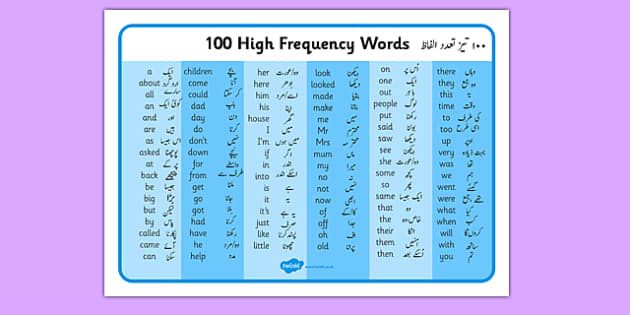 For example, buy, sell, download, etc. Such requests are most important for online stores and sites that provide any services. For transactional queries, search engines place increased demands on the functionality of the site. For example, with the word "buy" at the beginning of the search results, there will be sites that really allow you to buy or order a product.
For example, buy, sell, download, etc. Such requests are most important for online stores and sites that provide any services. For transactional queries, search engines place increased demands on the functionality of the site. For example, with the word "buy" at the beginning of the search results, there will be sites that really allow you to buy or order a product. -
Commercial
These requests partially overlap with transactional requests and attract the bulk of buyers to the site. They look like "price for an Audi A8", "order flowers".
-
Geo-dependent
That is, queries that refer to a certain region. For example, if a user needs dry cleaning, the search engine will return relevant sites in a given city or even district (for devices with geolocation). The search engine automatically determines by keywords that the user only needs local sites for this query. She knows this based on the preservation of history: if the vast majority of users eventually go to local sites, the request is geo-dependent.
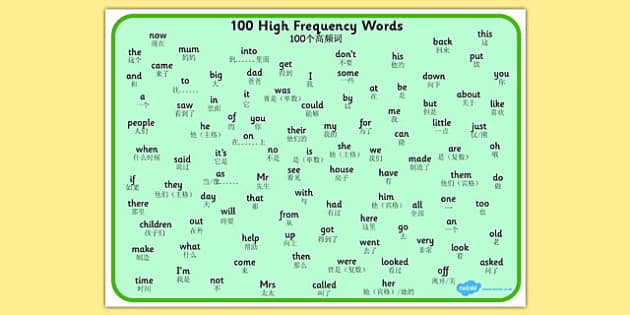
Keywords can have several features that do not contradict each other. For example, they can be both commercial and transactional at the same time.
Frequency of queries
Also, keywords can be classified by frequency, i.e., by the frequency of the query in the search engine:
- High-frequency (HF) - the most popular queries;
- Low-frequency (LF) - rarely used by users, but quite specifically defining the subject;
- Midrange (MF) .
Optimizers do not set precise boundaries between these groups. Rather, these terms appeared to simplify communication between optimizers. It is conditionally believed that regional low-frequency requests have from 1 to 300 - 500 impressions per month, mid-range requests - from 300 to 3000 - 7000 impressions, high-frequency requests, respectively, more. Search engines perceive these groups differently.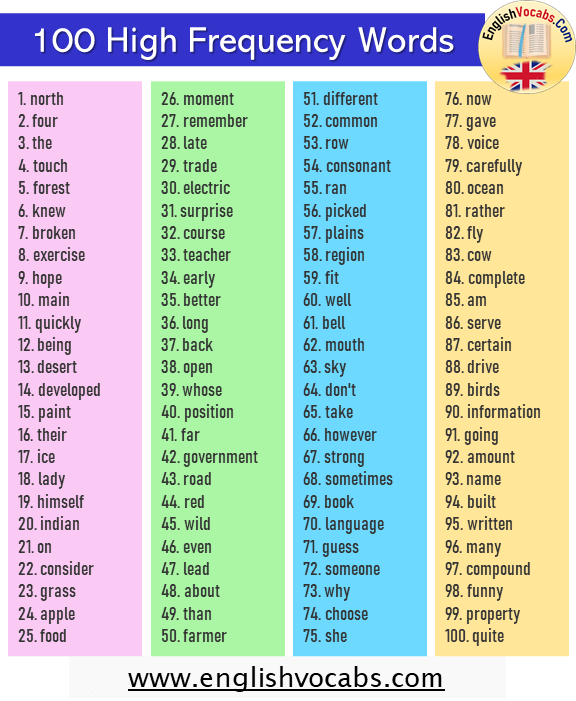 For example, for low-frequency queries, they have to accumulate statistics of behavioral characteristics for a long time, since there are few transitions, and therefore, to calculate the ranking, behavioral factors are used not for the keyword, but for the entire site. With high-frequency queries, everything is more complicated, as a rule, they consist of one or two words, so there are a lot of suitable pages on the Internet and on a particular site. This complicates the process of ranking (sorting) to display only the best results.
For example, for low-frequency queries, they have to accumulate statistics of behavioral characteristics for a long time, since there are few transitions, and therefore, to calculate the ranking, behavioral factors are used not for the keyword, but for the entire site. With high-frequency queries, everything is more complicated, as a rule, they consist of one or two words, so there are a lot of suitable pages on the Internet and on a particular site. This complicates the process of ranking (sorting) to display only the best results.
To promote new sites, it is more profitable to use low-frequency queries. There is less competition for them and they are the most specific. High-frequency requests are the most expensive, and promotion on them makes sense only after entering the TOP-10 LF and MF requests. At the same time, high-frequency requests are characterized by low conversion, i.e., a small number of applications for services in relation to the total number of visits. The reason is simple - when searching for “barbell”, they can search for a sports bar to buy, a photo of a drill bar, a clothes bar or a bath bar.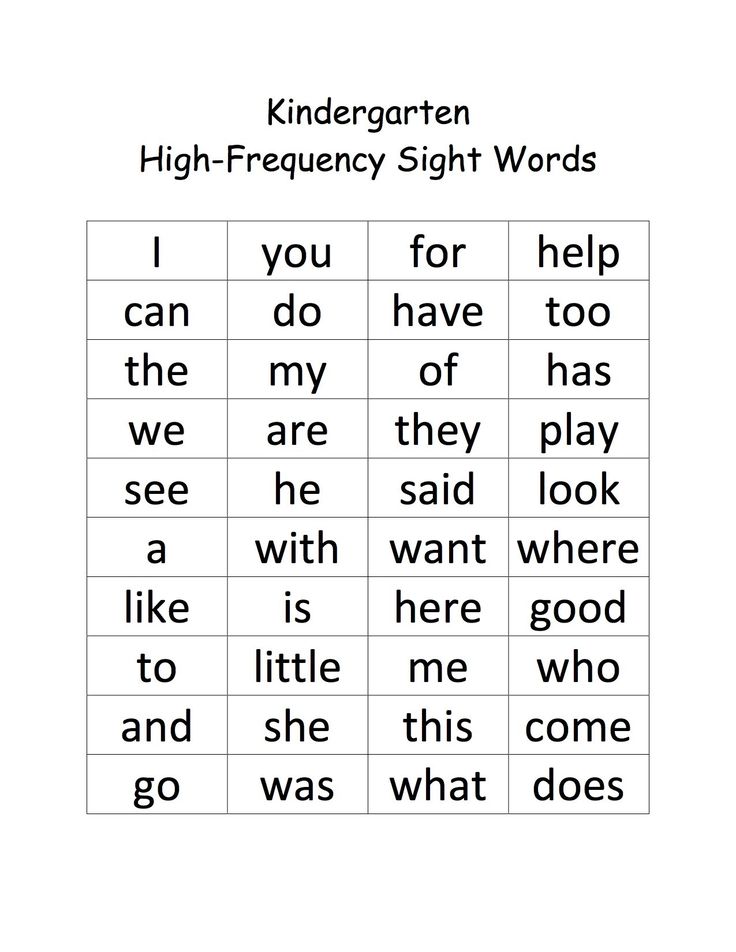 But “iron Samsung 2410 blue buy”, most likely, they will be looking to buy directly. HF queries can be used about a year after the site appeared, or earlier if MF queries began to appear in the TOP-10.
But “iron Samsung 2410 blue buy”, most likely, they will be looking to buy directly. HF queries can be used about a year after the site appeared, or earlier if MF queries began to appear in the TOP-10.
In general, you should first compile a rough list of keywords that are relevant to your site. Relevance to the topic in this matter is very important, especially for commercial inquiries. Getting to the TOP due to popular keywords will not provide profit if the user does not find the necessary information on the site. After identifying with possible keywords, it is necessary to check their frequency and competitiveness. These are the most important indicators and, of course, everyone wants to find a popular query with little competition in order to immediately go to the TOP.
Query Concurrency
Concurrency is a bit more complicated. Several methods can be used to determine the number of competitors.
- In the Google search box, type allintitle: "key phrase" ("key phrase" must be replaced with the query of interest).
